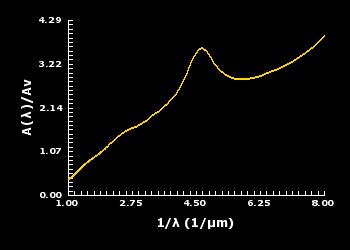Overview
This is an online help for the CADS stellar Spectrum Simulator. This software can help you simulate the spectrum of a star. It uses the Kurucz database (Dr. R. Kurucz, CD-ROM No. 13, GSFC) to generate model spectrum. The backend calculation is based on Sujatha et al (BASI, 32, 151, 2004). If you come across any inconsistent results, report to us. You may either file a bug report at the cads Bugzilla or write to cads_AT_iiap.res.in.
In order to reduce the complexity of the inputs page, we use javascript to show only the relevent input fields. Javascript is also used to check if the entered values are of expected types and within range. For eg: if you leave any of the required inputs blank, or if you enter a wrong data type, the field will turn red. If the number in a field is out of range, it would turn the number red. Javascript works on the client-side, ie on your browser. Checking input values before submitting them helps to reduce data transfer to and from the server, and (more importantly) it can save you several seconds on slow connections. Therefore, for your own convenience we recommend javascript enabled browsers, though it won't affect the functionality of the tool. Brief descriptions of input fields and the backend calculations are given in the sections below. Each of the user inputs should be within an allowed range. These restrictions in range are in place to avoid "un-astronomical" values in input fields.
Spectral Type
Select a combination using the three drop down lists for spectral class and subclass. Please note that some of the combinations may not be valid, in which case, the tool will try to make a guess for the closest match. While there are no known issues with finding a closest match, we would appreciate any feedback on it.
Apart from the spectral type, we need an estimate of the source flux at a wavelength so that simulated spectrum can be scaled accordingly. This is done using either the value of Source Magnitude or Flux density.
Source Magnitude
Apparent magnitude of the star. Flux of source at the respective band is calculated first, which is then used to scale the normalized stellar spectrum. Alternatively, you can feed in the Source Flux as well.
Band
Magnitude is expected in one of the vega based U/B/V/R band. You may choose AB also. In this case, the magnitude is first converted to V magnitude before calculations using the relation: V = V(AB) + 0.044 (Source: Patton)
- Allowed range: -26.0 to 30.0
- Data type: integer or real.
Source Flux
Type in the source flux value here. The normalized source spectrum will be scaled to this value. Note that we do not require a separate field for source magnitude anymore. Input flux may be specified in a number of units:
- Watts m-2 Hz-1
- Allowed range: 6.2 x 10-36 to 1.6 x 10-13
- Ergs s-1 cm-2 Hz-1
- Allowed range: 6.2 x 10-33 to 1.6 x 10-10
- Ergs s-1 cm-2A-1
- Allowed range: 4.0 x 10-23 to 1.00
- Jansky (10 x -26 Watts m-1 Hz-1)
- Allowed range: 6.2 x 10-10 to 1.6 x 1013
Wavelength
Source Flux should be accompanied by a wavelength at which the flux is measured. Expected units is Angstroms.
Galactic Extinction
Contribution from Galactic extinction to the source flux. We begin with calculating AV, the extinction in V band (in magnitude). Various inputs used to calculate AV and their allowed ranges in their values are listed below:
RV
Observed extinction curve in the Galaxy is fairly well characterized by this single parameter RV. It is a measurement of the total extinction AV to selective extinction, E(B-V). RV = 3.1 is the standard value for interstellar medium.
- Allowed range: 0.0 to 10.0
- Data type: integer/float
E(B-V)
E(B-V) = AB - AV is the difference between extinction in the B band and V band.
AV = RV x E(B-V)
- Allowed range: 0.0 to 1000.0
- Data type: integer/float
NH
The hydrogen column density NH along the line of sight. Total extinction AV depends on the amount of interstellar dust, which in turn is proportional to the hydrogen column density along the line of sight. Input units are 1021 cm-2.
AV = (NH x RV/5.81)
- Allowed range: 0.00001 to 10000.0
- Data type: integer/float
Heliocentric Distance
As you span greater distances along any line of sight, you cover more dust which scatters starlight. AV can also be expressed as a function of heliocentric distance.
AV = 1.6 x distance(Kpc)
- Allowed range: 0.0 to 100.0 (kpc).
- Data type: integer/float
AV
Often we face situations where none of the above are required and you got AV is readily available. That brings us to an AV input option.
- Allowed range: 0.0 to 10.0
- Data type: integer/float
Calculations
Once we have AV, next step is to calculate Aλ, extinction at a given wavelength. This is used to correct the observed magnitude (or source flux) for extinction. We use the Galactic Extinction model from Cardelli, Clayton & Mathis (ApJ, 345, 245, 1989):

AV as a function of μm-1, for RV = 2.75
Aλ = (a + b/RV) x AV
Where a and b are polynomial functions of wavelength.
Extinction spectrum is then applied on the simulated/uploaded source spectrum:
- flux(Obs) = flux(sim)/alog10(Aλ/2.5)
![[Back to the Previous Page] [Back to the Previous Page]](/cads/images/goback.jpg)
![[Move to the Top] [Move to the Top]](/cads/images/gotop.jpg)

